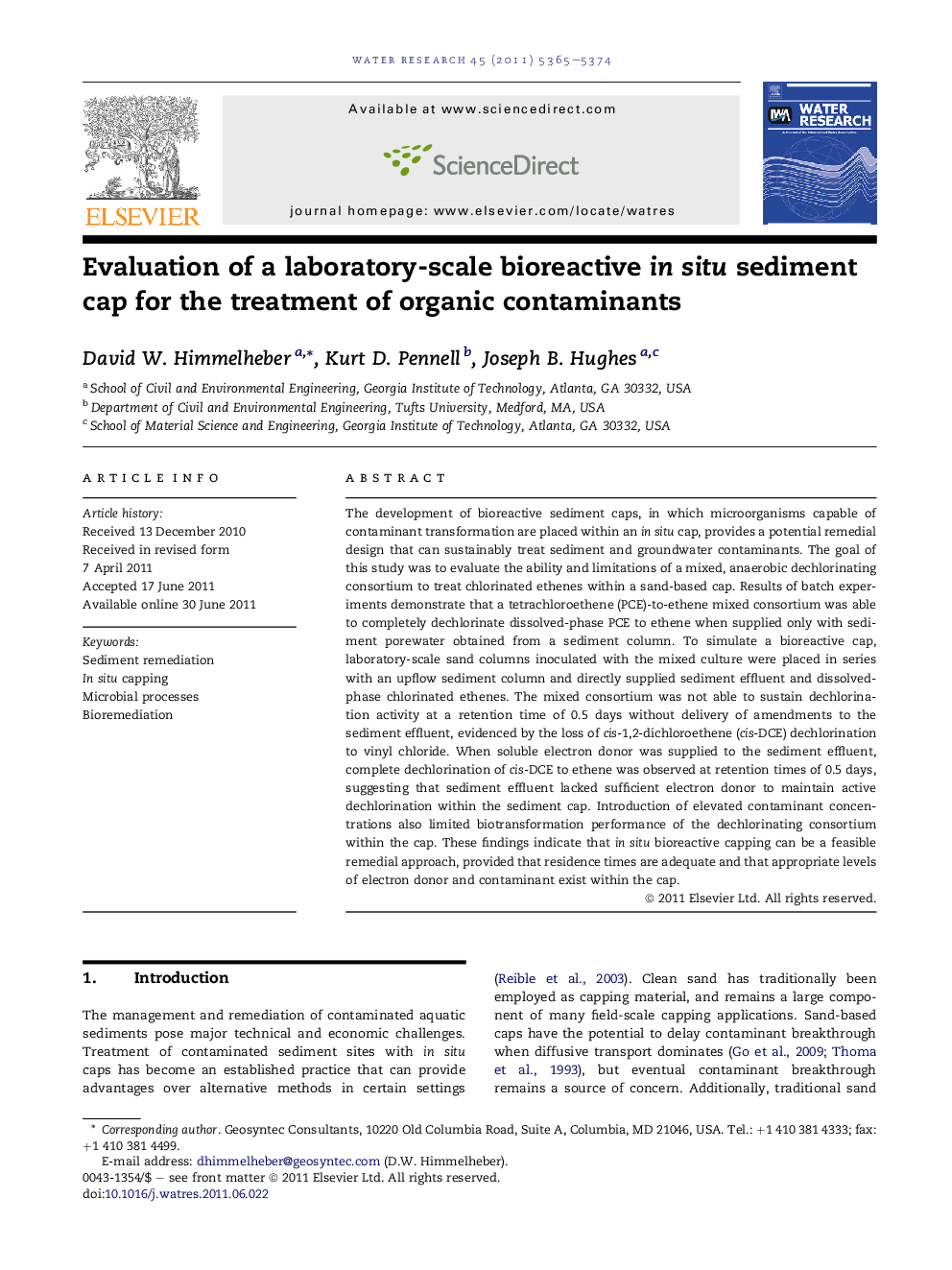| کد مقاله | کد نشریه | سال انتشار | مقاله انگلیسی | نسخه تمام متن |
|---|---|---|---|---|
| 4483156 | 1316880 | 2011 | 10 صفحه PDF | دانلود رایگان |

The development of bioreactive sediment caps, in which microorganisms capable of contaminant transformation are placed within an in situ cap, provides a potential remedial design that can sustainably treat sediment and groundwater contaminants. The goal of this study was to evaluate the ability and limitations of a mixed, anaerobic dechlorinating consortium to treat chlorinated ethenes within a sand-based cap. Results of batch experiments demonstrate that a tetrachloroethene (PCE)-to-ethene mixed consortium was able to completely dechlorinate dissolved-phase PCE to ethene when supplied only with sediment porewater obtained from a sediment column. To simulate a bioreactive cap, laboratory-scale sand columns inoculated with the mixed culture were placed in series with an upflow sediment column and directly supplied sediment effluent and dissolved-phase chlorinated ethenes. The mixed consortium was not able to sustain dechlorination activity at a retention time of 0.5 days without delivery of amendments to the sediment effluent, evidenced by the loss of cis-1,2-dichloroethene (cis-DCE) dechlorination to vinyl chloride. When soluble electron donor was supplied to the sediment effluent, complete dechlorination of cis-DCE to ethene was observed at retention times of 0.5 days, suggesting that sediment effluent lacked sufficient electron donor to maintain active dechlorination within the sediment cap. Introduction of elevated contaminant concentrations also limited biotransformation performance of the dechlorinating consortium within the cap. These findings indicate that in situ bioreactive capping can be a feasible remedial approach, provided that residence times are adequate and that appropriate levels of electron donor and contaminant exist within the cap.
► We assessed a bioreactive cap treatment approach for dissolved chlorinated organic contaminants.
► Complete PCE dechlorination was not observed without amendments at a 1-day residence time.
► Supply of electron donor allowed for complete dechlorination to ethene at residence times of ½ day.
► Elevated contaminant concentrations limited performance of the dechlorinating consortium.
► Bioreactive capping can be a feasible remedy depending on physical/geochemical site conditions.
Journal: Water Research - Volume 45, Issue 17, 1 November 2011, Pages 5365–5374